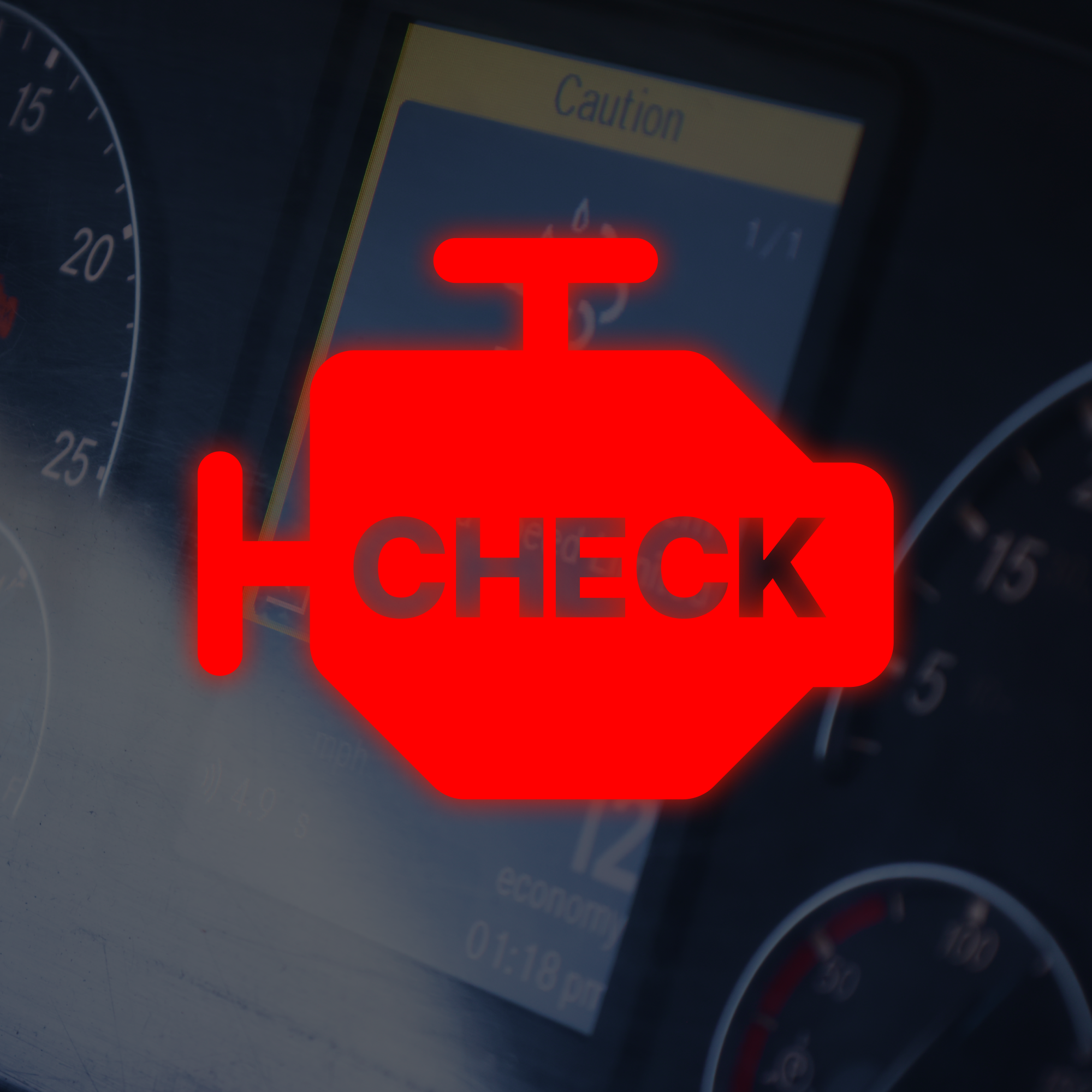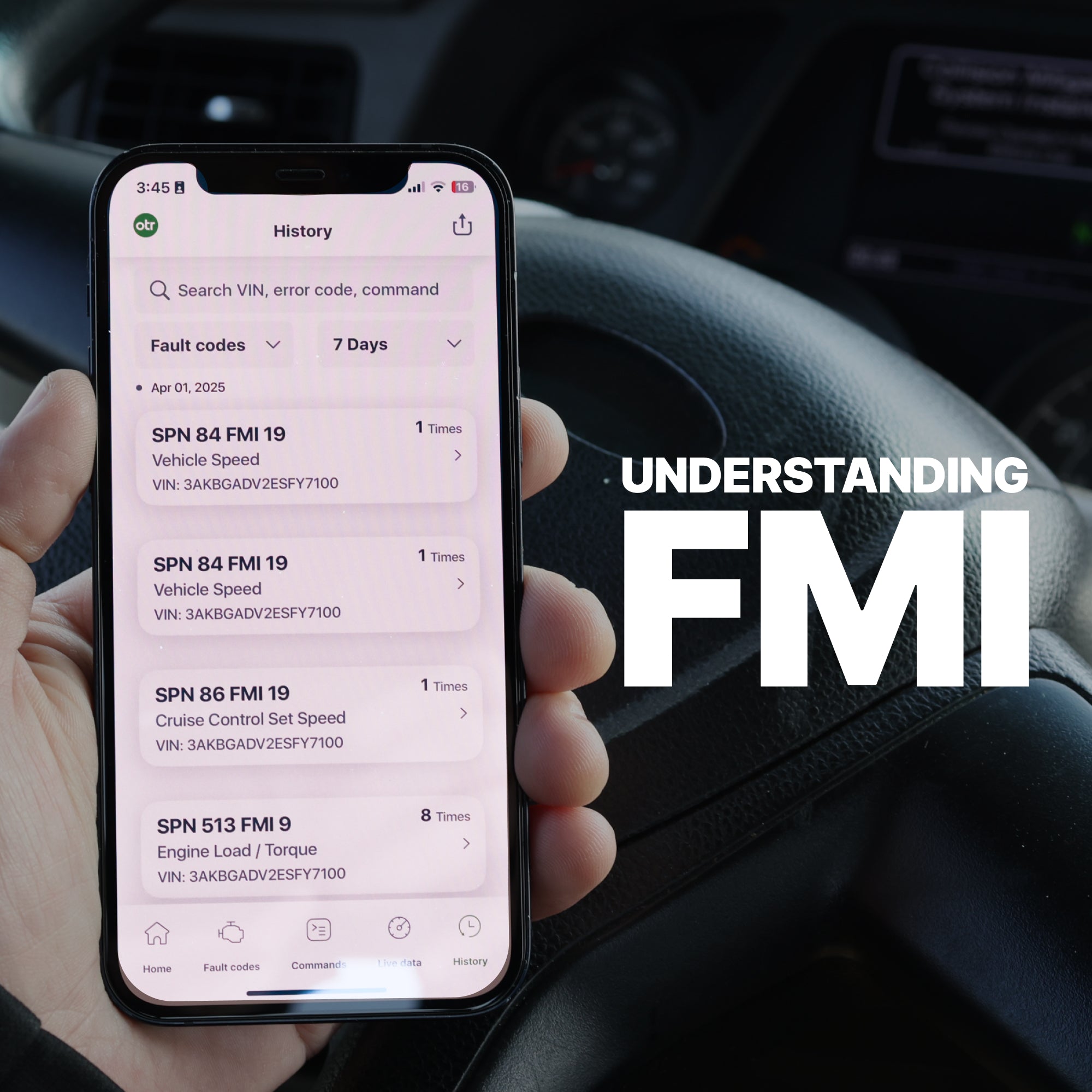OTR Diagnostics gives you the owner-operator access to vital information from your semi-truck about fault codes, live data, forced regens, DPF (Diesel Particulate Filter) soot level, vehicle history, their causes, and more.
These details of your aftertreatment rival advanced OEM (Original Equipment Manufacturer) dealership software, far exceeding your average handheld scan tool.
OTR Diagnostics helps identify issues and provides insights into semi-truck performance, ultimately saving you, the owner-operator, time, and money.
In this blog, we will explore advanced tips to help you maximize the benefits of your OTR Diagnostics tool.
How to Read & Understand Semi-Truck Fault Codes: OTR Diagnostics
Fault codes are essential to know and understand because they tell you exactly what is wrong with your semi truck. Especially when your Check Engine Light, MIL light, or Stop Engine Light is flashing.
Once you connect OTR Diagnostics to your semi-truck, at the bottom of the screen, you will see a tab that says, "Fault Code." Now is OTR Diagnostics' time to shine. In the fault code section, you will see that it is sectioned off by the different chassis of your semi truck.
The sections are “Engine,” “Transmission,” “Cab Controller,” “ABS system,” etc. Double click on each fault code to view more advanced information on them.
Jason Chise, CEO and Founder of OTR Performance, makers of OTR Diagnostics, mentioned during a podcast that "We want to make sure that we are empowering you, the owner-operator, with the easy-to-read information so that you know exactly what's going on with your semi truck and see if it's a repetitive issue."
Not only can you view the fault codes, OTR Diagnostics gives you the ability to print or share that data. Why is that important to you? You are able to see if a fault code happens again. All your data is stored in your history.
Storing Fault Code, Forced Regens, and All Semi-Truck Data History in the App.
The "History" feature in OTR Diagnostics captures all your fault codes and everything you have done inside the OTR Diagnostic App, along with sending commands.
If you were to reset a fault or initiate a forced regen, that information will be logged into your OTR Diagnostics app on your android or iPhone for future viewing.
If you perform a forced regen, all that data will be logged in the app, along with information like how long it took. All this information is stored safely on the cloud. You can search all your history.
This is important if you are chasing down fault code that keeps popping up which could potentially turn out to be a ghost code.
Why Is Capturing the History of What You Do Inside the OTR Diagnostic App Important?
You are able to access your semi-truck diagnostic info any time, even when you're not connected to your truck. Having the history stored directly on the OTR Diagnostic app gives access to easy to read and understand data.
Commands like resetting fault codes, along with forced regens can be very helpful when diagnosing the problem.
Knowing when and how these issues occur can help you determine if you are able to fix the problem on your own or if you must take it into the shop to have it professionally fixed.
For example, you are driving in an area in the mountains and are climbing up a steep grade. Every time you do this, a fault code appears.
Having that information about the when and where that fault code appears on hand along with the ability to share that info with a tech can speed up the process or eliminate the need to take your truck in at all.
Also, history can play an important role when selling your truck. Having a detailed list of the fault codes and any issues your truck had can make the sale of the truck a lot easier.
OTR Diagnostics Has OEM Level Commands for Your Semi-Truck.
OTR Diagnostics makes advanced diagnostics amazingly simple for you. There are 3 main sections: Reset Fault Codes, Reset Aftertreatment, and Forced DPF Regens.
Reset Fault Code Menu: Depending on your truck, you may have a subset of fault codes.
Reset Aftertreatment: Every engine is different depending on your engine configuration.
Keep in mind that with some commands, you may be required to do extra tasks, such as driving with a heavy load for 30 miles to reset a fault code. OTR Diagnostics makes this easy for you to comprehend and perform.
The commands are the same as the dealer would use, they just make it easy for you to view and use.
Forced DPF Regens: This is going beyond your standard regen. It is different from driving (passive regen) or parked regen (active regen). This regen is the same command that is done at the dealer level.
OTR Performance took a complicated process and simplified it for you. Not only does the app track the number of regens, but it also records the amount of time it took to regen. Make sure you are in a safe place to perform a regen.
How Long Does a Forced Regen Take to Complete on a Semi-Truck?
On average, a forced regen takes anywhere from 30 to 90 minutes to run, with the sweet spot being 45 to 60 minutes. Every manufacturer's time is different. Some regens are based on how much soot is on your DPF filter.
If you are doing a lot of light loads and city driving, a regen may take longer because of where and the way you are driving. “Our recommendation is doing a forced regen every 2-3 weeks.” says Jason Chise. “This ensures your system is running at tip-top shape."
You do not want to be stuck in traffic or at a delivery where it is not convenient, or you are unable to stay parked to perform a regen.”
What Is the Importance of Performing Regular Regens on Your Semi-Truck?
Doing a DPF regen helps with your DEF (Diesel Exhaust Fluid) fluid consumption. By performing regular DPF regens, you can prolong the number of times you will need to fill up your DEF fluid. Your system will be cleaned.
Every time you are initiating a forced DPF regen, you are putting more fuel into your exhaust system to burn more soot. The result is more power and better drivability for your truck.
OTR Diagnostics enables you to control when and where you can perform a forced regen, making your semi-truck more reliable and efficient.
Why Is Leveraging OTR Diagnostics Live Data Important for an Owner-Operator?
One of the most important reasons live data is important for an owner-operator is the fact that you can monitor your truck's health in real time. You can view functions like soot level, NOx sensor information, and the specific vitals on what is going on during a regen, especially with exhaust temperatures.
Live data is important to view to help diagnose serious issues you may have with your semi-truck. OTR Diagnostics displays live data differently depending on your engine, make, and model.
If you are connected to a Volvo, Cummins, or Paccar, OTR Diagnostics may display that information differently.
Regularly Update Your OTR Diagnostics Software
Just like any other software, OTR Diagnostics tools receive updates to improve performance and compatibility. Regularly check for updates and install them promptly.
Staying up to date ensures that your OTR Diagnostics tool can effectively diagnose and troubleshoot the latest vehicle models and systems.
OTR Diagnostics tools are essential for maintaining the performance and safety of heavy-duty semi truck vehicles. By implementing these advanced tips, you can make the most of your OTR Diagnostics tool and enhance your ability to diagnose and troubleshoot issues effectively.
Now that you have the power of OTR Diagnostics in your hand, it is time to fully understand and utilize its full capabilities.




OTR Diagnostics vs. Other Semi Diagnostic Tools: A Comparison
5 Common Misconceptions About DIY Repair on your Semi-Truck